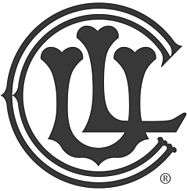Union League Club of Chicago

The Union League Club of Chicago is a prominent social club located at 65 West Jackson Boulevard in the Loop neighborbood of Chicago.
History
The Club can trace its roots to 1862, when radical southern sympathizers in the north were plotting an insurrection in Lincoln’s home state. To thwart this effort, a group of 11 men gathered on June 25, 1862, in Pekin, the seat of Tazewell County, along the Illinois River near Peoria, to establish the first council of the Union League of America. Individual clubs had already formed in Tennessee, Maryland and other border states. Soon, the Union League movement was focusing on providing medical supplies, training nurses, and advocating equality for slaves. By the end of the Civil War, the Union League of America movement grew to two million members.
As the War gradually turned in favor of the North, the Union Leagues shifted to political endorsements, favoring radical Republicans who advocated full equality and voting rights for African Americans. The Union League played a prominent role in Lincoln’s closely contested re-election in 1864.
Following the Chicago Fire of 1871, a six-year national depression ignited discontent among workers sparking the labor riots of 1877 and a major railroad strike. Government corruption was rampant. A new city charter provided opportunities for vote fraud.
Long John Wentworth, the colorful former newspaper editor, police commissioner, two-time mayor, and congressman, saw an opportunity to form a “marching club,” a group of partisans who worked and paraded for their favorite candidates. The Republican National Convention of 1880 was in Chicago and Wentworth formed the Union League Club to support Ulysses S. Grant, who sought a third-term nomination for president. Though the Convention denied Grant the nomination and selected James A. Garfield of Ohio, the Union League of Chicago was established. The Club’s first president was James B. Bradwell.
A native of England, Bradwell worked his way through Knox College, was admitted to the bar and elected to the Illinois state legislature where he advocated women’s suffrage. His wife, Myra Bradwell, founded the Chicago Legal News and after numerous defeats became the first woman in the United States admitted to the bar. She represented Mary Todd Lincoln at her insanity hearings and secured her release from an asylum in Batavia, Illinois.
Since its founding in 1879, members of the Club have been credited with playing a role in establishing many of the city’s major cultural organizations, including The Art Institute of Chicago, Orchestra Hall, the Auditorium Theater and the Field Museum. The Club also was instrumental in having Chicago named the site of the World’s Columbian Exposition of 1893. More recently, Club leadership spearheaded the siting and opening of the Harold Washington Library Center in downtown Chicago.
The Club has also stimulated nonpartisan political initiatives, such as election reform; the formation of the Chicago Crime Commission; the adoption of a new state constitution; the establishment of the Armed Forces Council of Chicago; and protection of the City of Chicago’s municipal personnel code.
See also
References
Notes
Bibliography
- Nowlan, James D. (2004) Glory, Darkenss, Light: A History of the Union League Club. Northwestern University Press. ISBN 978-0810115491